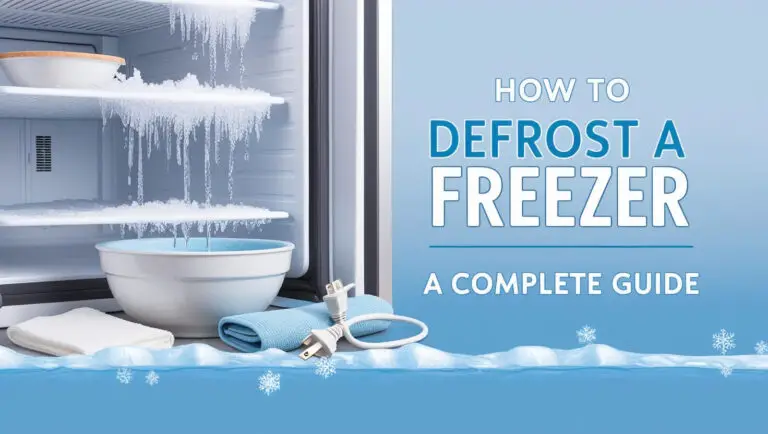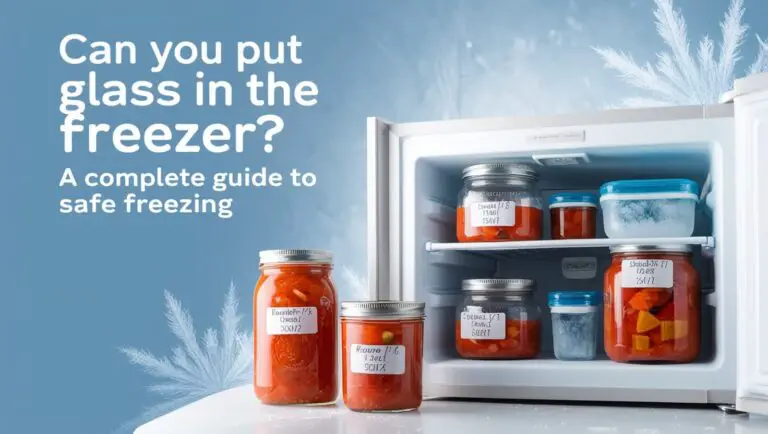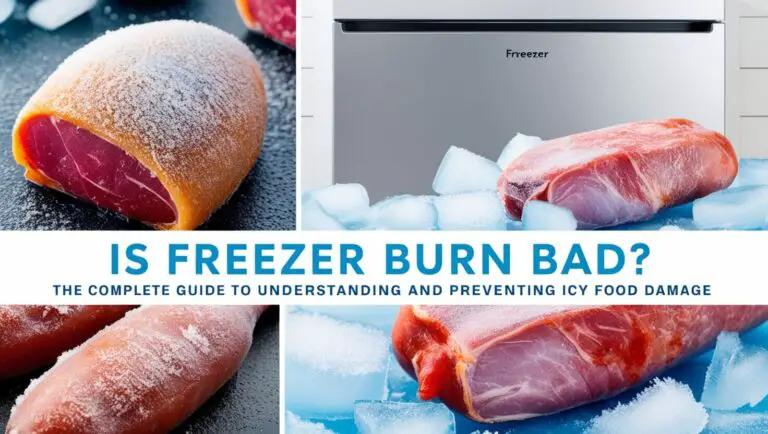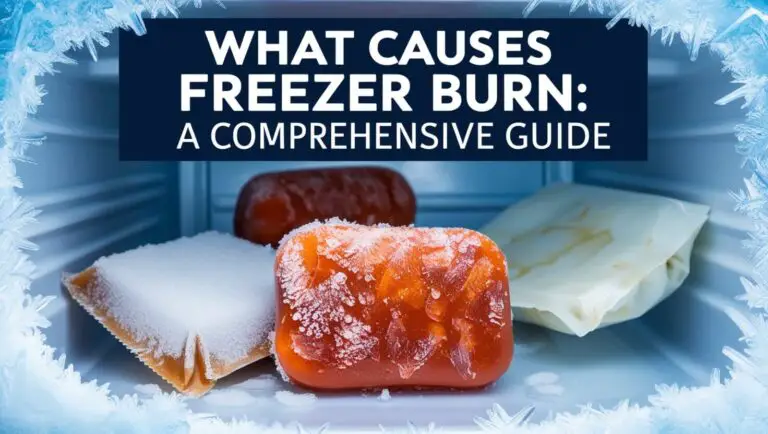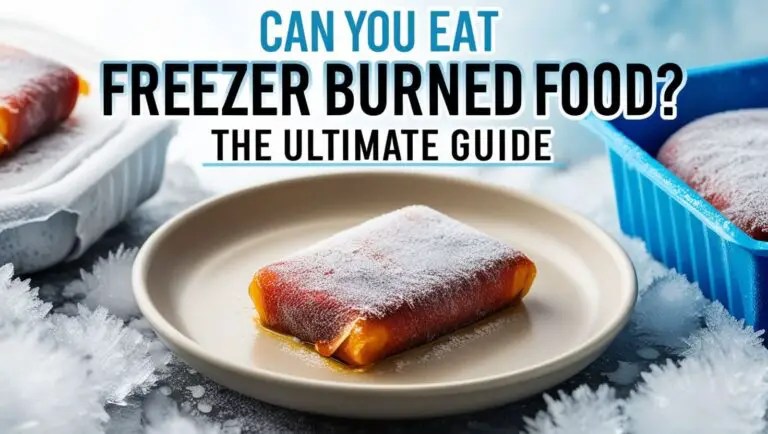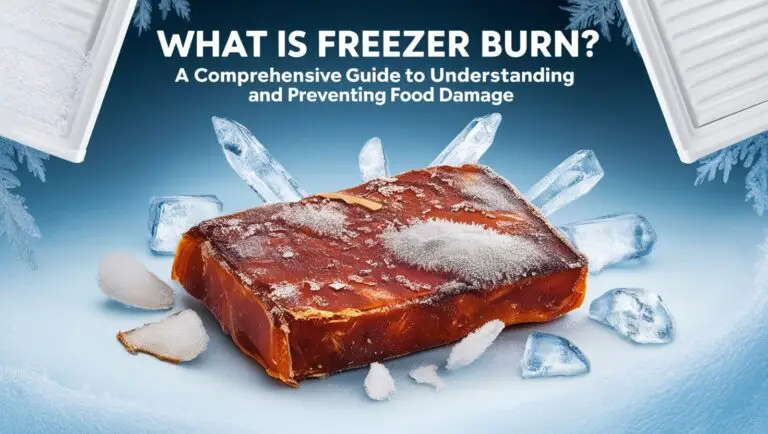How to Prevent Freezer Burn: Keep Your Food Fresh
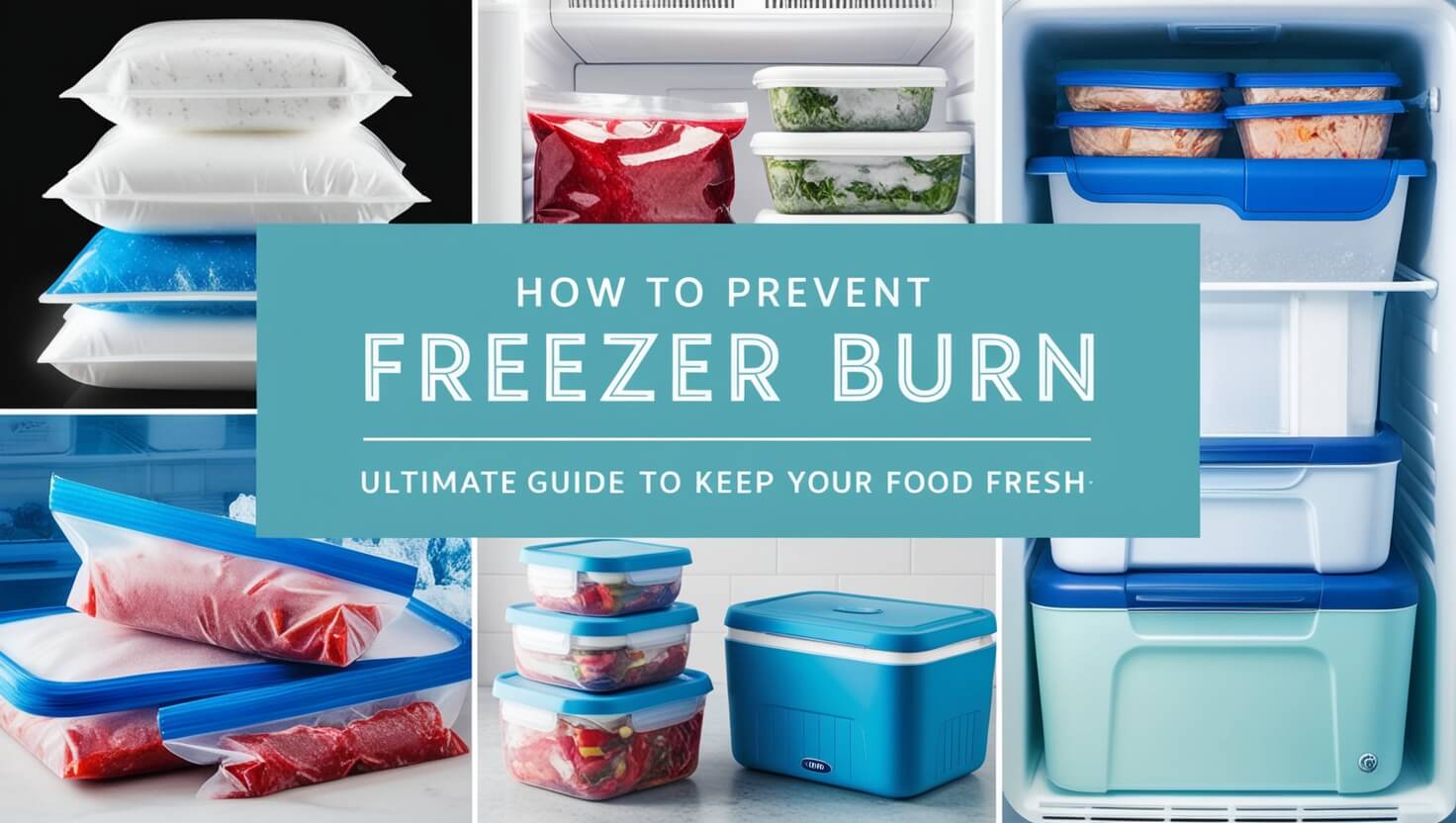
Are you tired of opening your freezer only to find your carefully stored food covered in ice crystals and looking unappetizing? Freezer burn is a common problem that can ruin the taste and texture of your frozen foods. But don’t worry – with the right knowledge and techniques, you can prevent freezer burn and keep your food fresh for longer. In this comprehensive guide, we’ll explore everything you need to know about freezer burn prevention, from understanding the science behind it to practical tips for various food types.
What is Freezer Burn?
Before we dive into prevention methods, it’s crucial to understand what freezer burn is and why it occurs. Freezer burn is a condition that affects frozen food when it’s exposed to air, causing dehydration and oxidation. While it doesn’t make food unsafe to eat, it can significantly impact its quality, taste, and texture.
Definition and Causes
Freezer burn happens when moisture on the surface of frozen food evaporates, leaving behind dry, discolored patches. This process is accelerated when food is exposed to air or experiences temperature fluctuations. The ice crystals you see on freezer-burned food are actually moisture that has escaped from the food and refrozen on its surface.
Effects on Food Quality
The effects of freezer burn can be quite noticeable:
- Texture changes: Food becomes tough, leathery, or dry
- Color alterations: Meat may turn brown or gray, while vegetables can become pale
- Flavor loss: Foods often taste bland or develop an off-flavor
While these changes don’t make the food unsafe, they can certainly make it less appetizing and enjoyable to eat.
Understanding the Science Behind Freezer Burn
To effectively prevent freezer burn, it’s helpful to understand the science behind it. This knowledge will empower you to make informed decisions about food storage and freezer management.
The Role of Moisture in Freezer Burn
Moisture is key in the freezer burn process. When food freezes, the water inside it forms ice crystals. In an ideal situation, these crystals would remain stable. However, if the food is exposed to air or temperature changes, the moisture can sublimate – turning directly from ice into vapor. This vapor then escapes from the food, leaving it dehydrated.
Temperature Fluctuations and Their Impact
Consistent temperature is crucial in preventing freezer burn. When temperatures fluctuate, it can cause ice crystals to melt slightly and then refreeze. Each time this happens, the ice crystals grow larger, damaging the food’s cellular structure and accelerating moisture loss.
Signs of Freezer Burn
Recognizing freezer burn early can help you manage your frozen food more effectively. Here are the key indicators to look out for:
Visual Indicators
- Ice crystals on the food’s surface
- Discoloration: gray or brown spots on meat, faded colors on vegetables
- Shriveled or dried-out appearance
Texture Changes
- Meat becomes tough or leathery
- Vegetables feel rubbery or spongy
- Ice cream develops a gritty texture
Taste Alterations
- Foods taste bland or flavorless
- Off-flavors may develop, especially in fatty foods
Is Freezer-Burned Food Safe to Eat?
A common question many people have is whether freezer-burned food is safe to consume. Let’s address this concern:
Food Safety Considerations
The good news is that freezer burn does not make food unsafe to eat. The process of freezer burn doesn’t create an environment for harmful bacteria to grow. However, it can significantly impact the quality of the food.
When to Discard Freezer-Burned Items
While freezer-burned food is safe, there are times when you might want to consider discarding it:
- If the freezer burn is extensive and affects a large portion of the food
- When the taste or texture has become unpalatable
- If the food has been stored for an excessively long time (beyond recommended freezer storage times)
In many cases, you can salvage partially freezer-burned food by cutting away the affected areas before cooking or consuming.
Essential Tips to Prevent Freezer Burn
Now that we understand what freezer burn is and how it affects food, let’s explore some essential tips to prevent it:
Proper Packaging Techniques
Proper packaging is your first line of defense against freezer burn. Here are some effective techniques:
- Remove as much air as possible from packaging
- Use freezer-specific, airtight containers or bags
- Double-wrap foods when necessary
- Avoid using regular plastic wrap or aluminum foil alone – they’re not airtight enough
Optimal Freezer Temperature Settings
Maintaining the right temperature in your freezer is crucial:
- Set your freezer to 0°F (-18°C) or below
- Use a freezer thermometer to regularly check the temperature
- Avoid frequent or prolonged opening of the freezer door
Organizing Your Freezer for Better Preservation
A well-organized freezer can help prevent freezer burn:
- Group similar items together
- Use clear containers or labels for easy identification
- Place newer items towards the back and older ones in front
- Leave some space between items for air circulation
Best Practices for Freezing Different Food Types
Different foods require different freezing techniques to prevent freezer burn. Let’s look at some best practices for various food types:
Freezing Meats and Poultry
- Wrap tightly in freezer paper or plastic wrap, then place in a freezer bag
- Remove as much air as possible before sealing
- Divide large quantities into meal-sized portions before freezing
Preserving Fruits and Vegetables
- Blanch vegetables before freezing to preserve color and nutrients
- Freeze fruits in a single layer on a baking sheet before transferring to containers
- Use sugar syrup for berries to prevent freezer burn
Storing Dairy Products and Eggs
- Freeze milk in airtight containers, leaving room for expansion
- Grate cheese before freezing for easier use
- Don’t freeze eggs in their shells – beat them and freeze in airtight containers
Freezing Prepared Meals and Leftovers
- Cool foods completely before freezing
- Use shallow containers for quicker freezing and easier thawing
- Leave headspace in containers for food expansion
Choosing the Right Freezer Storage Containers
The containers you use can make a big difference in preventing freezer burn. Let’s explore your options:
Freezer-Safe Containers and Bags
- Rigid plastic containers: Durable and reusable
- Glass containers: Great for reheating but can break if dropped
- Freezer bags: Versatile and space-saving
Choose containers that are specifically labeled as freezer-safe for best results.
Vacuum Sealing: Pros and Cons
Vacuum sealing is an effective method for preventing freezer burn:
Pros:
- Removes nearly all air, significantly reducing freezer burn risk
- Extends food’s freezer life
Cons:
- Requires special equipment
- Can be more time-consuming
- Not suitable for all food types (e.g., soft fruits)
The Importance of Proper Cooling Before Freezing
Properly cooling food before freezing is crucial for maintaining quality and preventing freezer burn.
Cooling Hot Foods Safely
- Divide large quantities into smaller portions for faster cooling
- Use an ice bath to cool soups and stews quickly
- Refrigerate foods promptly and freeze once they’ve cooled completely
Avoiding Temperature Spikes in Your Freezer
- Don’t overload your freezer with room temperature items
- Freeze items in small batches to maintain freezer temperature
Managing Freezer Space Efficiently
Efficient freezer management can help prevent freezer burn and make your frozen foods last longer.
Avoiding Overstuffing
- Leave some space between items for air circulation
- Don’t block the freezer’s vents
- A full (but not overstuffed) freezer runs more efficiently
Rotation Strategies for Frozen Foods
- Use a “first in, first out” system
- Keep older items towards the front for easy access
- Regularly check and use items nearing their recommended storage time
Labeling and Inventory Management
Proper labeling and inventory management can help you use your frozen foods before freezer burn sets in.
Creating an Effective Labeling System
- Include the name of the item, date frozen, and quantity
- Use freezer-safe labels or markers
- Consider color-coding for different food types or family members
Tracking Freezer Contents
- Keep a freezer inventory list
- Update the list when you add or remove items
- Regularly review your inventory to plan meals and prevent waste
Defrosting Techniques to Minimize Freezer Burn Risk
Proper defrosting is important not just for food safety, but also for preventing freezer burn when storing leftovers.
Safe Thawing Methods
- Refrigerator thawing: Slowest but safest method
- Cold water thawing: Faster, but requires more attention
- Microwave thawing: Quickest, but can partially cook food
Avoiding Refreezing Thawed Foods
- Plan to use thawed foods promptly
- If you must refreeze, do so only if the food still contains ice crystals
- Cook thawed foods before refreezing when possible
Maintaining Your Freezer for Optimal Performance
A well-maintained freezer is key to preventing freezer burn and keeping your food fresh.
Regular Cleaning and Defrosting
- Clean spills immediately to prevent odors and contamination
- Defrost manual-defrost freezers when frost buildup reaches 1/4 inch
- For frost-free models, wipe down interior surfaces periodically
Checking and Replacing Seals
- Inspect door seals regularly for cracks or gaps
- Clean seals with warm, soapy water to remove debris
- Replace damaged seals promptly to maintain proper temperature
Common Freezer Burn Myths Debunked
There are many misconceptions about freezer burn. Let’s clear up some common myths:
Addressing Misconceptions
Myth 1: Freezer burn makes food unsafe to eat. Truth: While it affects quality, freezer burn doesn’t make food unsafe.
Myth 2: You can reverse freezer burn by thawing and refreezing. Truth: Once freezer burn occurs, the damage is done and can’t be reversed.
Separating Fact from Fiction
Fact: Proper packaging is more important than freezer temperature for preventing freezer burn. Fiction: All foods can be stored in the freezer indefinitely without quality loss.
Troubleshooting Freezer Burn Issues
If you’re experiencing persistent freezer burn problems, here’s how to identify and address the root causes:
Identifying the Root Cause
- Check your freezer’s temperature with a thermometer
- Inspect door seals for damage
- Evaluate your packaging methods
Solutions for Persistent Problems
- Upgrade to better quality freezer containers or bags
- Consider investing in a vacuum sealer
- If your freezer is old, it might be time for a replacement
Advanced Techniques for Long-Term Freezer Storage
For those looking to store food for extended periods, here are some advanced techniques:
Flash Freezing Method
- Spread individual pieces of food on a baking sheet
- Freeze until solid (usually 1-2 hours)
- Transfer to airtight containers or bags
This method prevents clumping and allows you to take out only what you need.
Using Dry Ice for Extended Preservation
- Useful for power outages or long-term storage
- Wear protective gloves when handling dry ice
- Place dry ice on top of frozen foods, not in direct contact
Eco-Friendly Freezer Burn Prevention Tips
You can prevent freezer burn while also being environmentally conscious:
Sustainable Packaging Options
- Use reusable silicone bags instead of disposable plastic
- Opt for glass containers with silicone lids
- Choose biodegradable freezer paper when possible
Energy-Efficient Freezer Usage
- Keep your freezer full (but not overstuffed) for better efficiency
- Clean coils regularly to improve performance
- Consider upgrading to an Energy Star certified model
Wrap UP: Mastering Freezer Burn Prevention
Preventing freezer burn is an essential skill for anyone who wants to make the most of their frozen foods. By understanding the science behind freezer burn and implementing the strategies we’ve discussed, you can significantly extend the quality and lifespan of your frozen items.
Key Takeaways
- Proper packaging is crucial: Remove air and use freezer-safe containers
- Maintain a consistent freezer temperature of 0°F (-18°C) or below
- Organize your freezer and rotate foods regularly
- Cool foods properly before freezing
- Label and track your frozen inventory
Implementing Your Freezer Burn Prevention Strategy
Start by assessing your current freezer situation. Identify areas for improvement and gradually implement the techniques we’ve covered. Remember, preventing freezer burn is an ongoing process, but with practice, it will become second nature.
By mastering these freezer burn prevention techniques, you’ll not only save money by reducing food waste but also ensure that your frozen meals are always delicious and ready to enjoy. Happy freezing!

